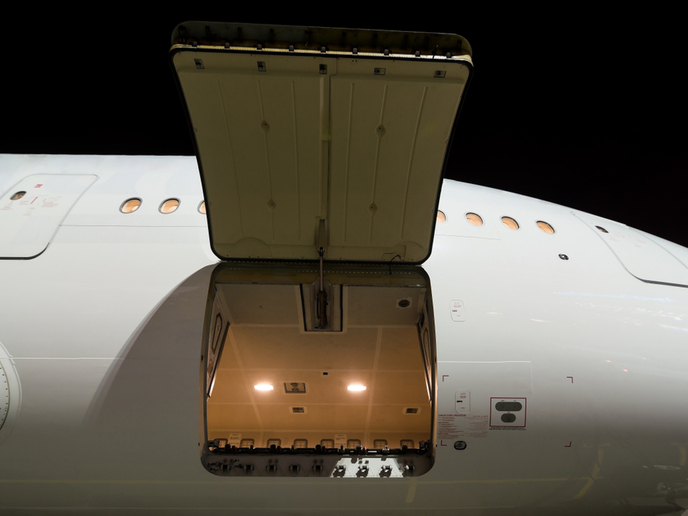Integrated, lightweight and sustainable aircraft components
Aiming to improve environmental performance and cost efficiency, manufacturers are switching to light metal alloys for aircraft parts. Less weight results in lower fuel consumption, a big boost to the competitiveness of Europe’s transport industry. Fast and cost-effective assembly of metal structures is critical for high-rate production. The EU-funded MISSP(opens in new window) project demonstrated advancements to the assembly of exceptionally strong, lightweight structural parts, helping ramp up production. In particular, project researchers proposed innovative ways of manufacturing metallic cargo doors. The aircraft doors explored could also serve as demonstrators for new materials and manufacturing techniques applicable for generic airframe structures. “Our aim has been to develop advanced manufacturing processes compatible with new lightweight aluminium alloys, and integral design concepts. The main aspects addressed were cost reduction, weight saving and sustainable manufacturing,” notes Michel Willemssens, MISSP coordinator and business developer at Sonaca(opens in new window).
Optimising assembly operations
To achieve their goals, researchers focused on designing a more integrated full structure with fewer interfaces between parts. “The manufacturing of the cargo door, which is already underway, is focusing on integrated structures to reduce the number of assembled parts and simplify assembly operations. Adding integrated structures helps ultimately slash assembly costs,” notes Yves Marchal, head of Material and Process Department at Sonaca. Aircraft engineers are widely using fasteners – devices that mechanically join two or more parts together. Rivets are the most common fasteners used in aircraft assembly. The high-precision riveting process comprises drilling, countersinking and fastener installation. It is repeated thousands of times on large aircraft. “During fastener hole drilling, engineers are using special coatings and paints to protect the parts and the holes before installing the rivets. This is a time-consuming process and requires the use of large quantities of consumable materials,” adds Marchal.
Advanced aluminium alloy set to take off
Researchers have been working on the development of an aluminium-magnesium-scandium alloy – a first-of-its-kind metal alloy in aircraft design. Its good specific stiffness, ductility and mechanical properties, as well as its excellent weldability and corrosion resistance come as a real boon for the industry compared to other aluminium alloys that are typically used. Importantly, the proposed aluminium alloy can be formed at temperatures as high as 300 °C without losing its original properties.
Two main project objectives
For the manufacturing of the external door skin, the first objective was to improve environmental aspects. Instead of using chemical milling(opens in new window) as a subtractive manufacturing process, researchers opted for mechanical milling to produce alleviation pockets on a flat plate before forming. To constitute an integral structure, which was the second main project objective, project partner CRM(opens in new window) employed laser beam welding for joining the stringers to the aluminium-magnesium-scandium skin panel. The panel was subsequently shaped by Sonaca as a whole, by creep forming in a furnace. Forming of the full structure in one single step was also addressed. To this aim, researchers tapped into the potential of high-speed forming processes for manufacturing the cargo door. Under high speed, the material deformation is essentially governed by the rules of viscoplasticity(opens in new window), in a similar way as it happens at elevated temperatures. This behaviour largely improves the forming of complex shapes and reduces springback(opens in new window). “The high-energy hydroforming(opens in new window) technique employed by 3D Metal Forming(opens in new window), another project partner, emphasises the advantages of high-speed forming over conventional mechanical forming processes. The process is a bit like a tsunami – it utilises an explosive charge to create the necessary underwater pressure that pushes the plate into a female mould. This enables us to form very thick plates, from which fully integrated structures can be machined with almost no distortion. No rivets, no welding, everything is done by combining forming and machining!” concludes Marchal.







